INTERNACIONAL
Estados Unidos incautó 13.000 barriles de químicos para metanfetamina que iban de China a México

Estados Unidos informó este miércoles la incautación de 13.000 barriles que contenían unas 300 toneladas de químicos utilizados en la fabricación de metanfetamina. El cargamento, según las autoridades, estaba dirigido al cartel de Sinaloa en México y tenía como punto de partida puertos chinos. La fiscal del Distrito de Columbia, Jeanine Pirro, calificó la operación como “la mayor incautación de precursores químicos para drogas realizada por Estados Unidos”.
El anuncio tuvo lugar en Pasadena, al sureste de Houston, donde Pirro apareció junto al director interino del Servicio de Inmigración y Control de Aduanas (ICE), Todd Lyons. La fiscal explicó que se trataba de “dos cargamentos de sustancias químicas, transportados en dos buques diferentes en alta mar y enviados al cartel de Sinaloa en México. De China a México. El puerto de descarga principal era Shanghái, China, y el de llegada, México”.
Los químicos interceptados incluían alcohol bencílico y N-metilformamida, compuestos esenciales en la síntesis de metanfetamina. De acuerdo con las estimaciones de ICE, esas sustancias habrían servido para producir alrededor de 189.000 kilos de droga, con un valor de 569 millones de dólares en el mercado de Houston. Lyons señaló que “si esos precursores hubieran llegado a su destino, habrían producido cientos de miles de libras de metanfetamina con ganancias por más de medio billón de dólares, lo que habría provocado más muertes en todo el país”.
La operación, llevada a cabo la semana pasada en aguas internacionales, contó con la cooperación de aliados en Panamá. Según Lyons, socios internacionales colaboraron con el personal estadounidense para reagrupar los envíos y trasladarlos al puerto de Houston, desde donde los barriles fueron llevados a depósitos seguros bajo custodia federal.
El trasfondo político de la operación también fue subrayado. Pirro destacó que esta incautación fue posible luego de que el presidente Donald Trump y el secretario de Estado, Marco Rubio, declararan al cartel de Sinaloa como una organización terrorista extranjera. Esa designación permitió a las autoridades aplicar leyes antiterroristas, que otorgan herramientas más amplias de vigilancia e interdicción.
El Departamento del Tesoro, a través de la Oficina de Control de Activos Extranjeros (OFAC), también sancionó a Guangzhou Tengyue, una empresa química con sede en China acusada de producir y exportar opioides sintéticos. Sus representantes Huang Xiaojun y Huang Zhanpeng fueron incluidos en la lista negra por su papel directo en la coordinación de envíos ilícitos. Ambos enfrentan además cargos penales en Estados Unidos, de acuerdo con el FBI.
El episodio se produce en un contexto en el que la epidemia de opioides sigue siendo una de las principales crisis de salud pública en Estados Unidos. Según datos de los Centros para el Control y la Prevención de Enfermedades (CDC), más de 112.000 personas murieron por sobredosis de drogas en 2023, la mayoría vinculadas al fentanilo y otras sustancias sintéticas.
El cartel de Sinaloa, considerado la organización criminal más poderosa del hemisferio occidental, ha ampliado en los últimos años su dominio en la producción de metanfetamina y fentanilo. Fundado por Joaquín “El Chapo” Guzmán, hoy preso en Estados Unidos, el grupo mantiene operaciones internacionales gracias a su capacidad de conseguir precursores químicos en Asia y moverlos a través de complejas redes logísticas hacia México y Estados Unidos.
No se trata de un caso aislado. En junio de 2025, ICE y la Oficina de Aduanas y Protección Fronteriza (CBP) ya habían incautado 50.000 kilos de otro precursor químico con destino al mismo cartel. Desde 2019, la estrategia estadounidense ha interceptado más de 1,7 millones de kilos de insumos químicos vinculados a la producción de metanfetamina.
El papel de China en esta cadena es un punto sensible en la relación bilateral. Washington acusa a Beijing de permitir que compañías privadas operen con impunidad en el mercado de precursores químicos.
Crime,North America,PASADENA
INTERNACIONAL
REBECCA GRANT: How Tomahawks work and how they could change everything for Ukraine
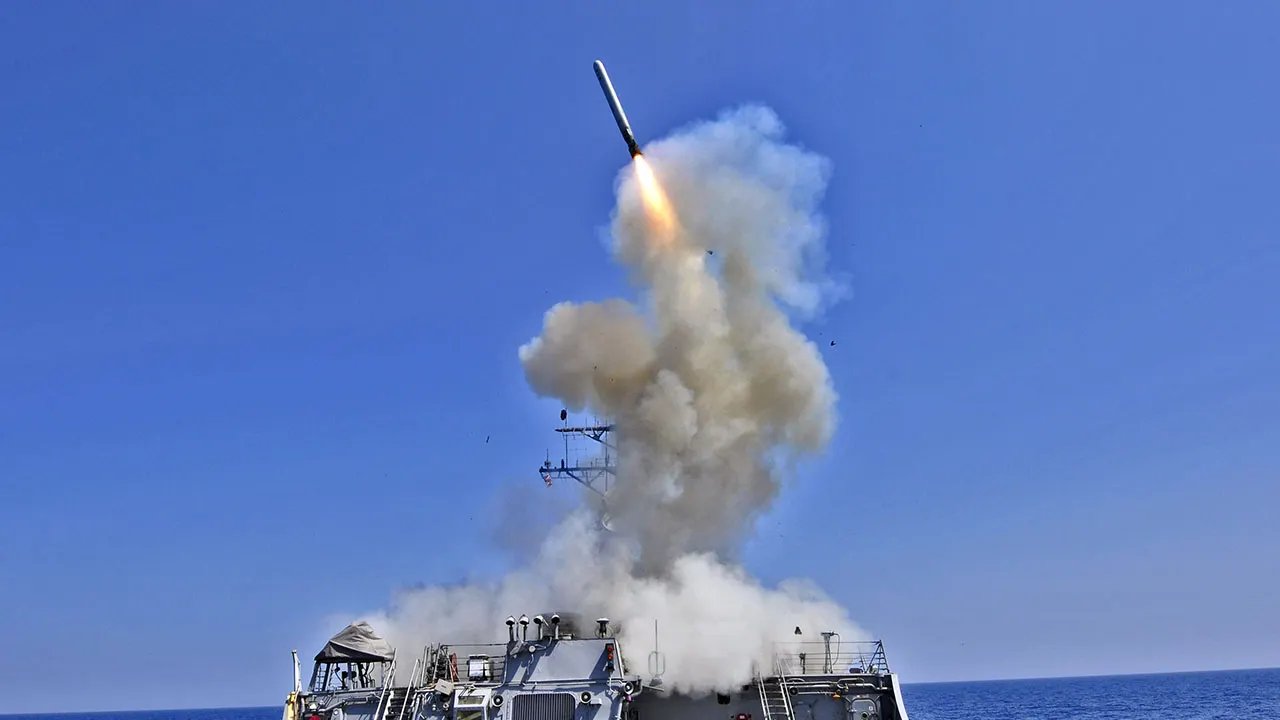
NEWYou can now listen to Fox News articles!
Tomahawks, Tomahawks, Tomahawks. That’s the word buzzing in the ears of Russian President Vladimir Putin, as President Donald Trump weighs providing America’s precision strike missile of choice to Ukraine.
Since May, Trump has bombed the Houthis in Yemen, obliterated Iran’s nuclear facilities and hit narco-terrorist drug boats in the Caribbean. Putin has to realize that Tomahawks could soon be in the skies over Russia.
What can Ukraine hit with the 1,000-mile-range Tomahawks? Start with the Shahed drone factory in Tatarstan, and at least 67 Russian airbases. Tomahawks in Ukraine’s hands rip open Russian energy infrastructure to precision attack with no warning.
ZELENSKYY PITCHES TRUMP ON UKRAINE DRONE-FOR-TOMAHAWK MISSILE EXCHANGE AS PRESIDENT WEIGHS ESCALATION CONCERNS
If Ukraine launches Tomahawks, they’ll be flying as low as 100 feet, hugging the terrain, evading radar. TLAMs can each take separate routes at 500 mph and then meet up over the Russian target for a coordinated strike.
Trump is baiting Putin. «Hopefully, they won’t need it,» Trump said of the Tomahawks at Friday’s lunch with Ukrainian President Volodymyr Zelenskyy at the White House. Trump said he’d like to «get the war over without Tomahawks» but then went on to describe the missiles as «very dangerous» and «incredible.»
President Trump is considering giving powerful Tomahawk missiles to Ukraine, a move that has gotten Russian President Vladimir Putin’s attention. (Getty Images)
Here’s the backstory on the Tomahawks and why Trump is keeping them on the table to pressure Putin.
Built for the Russian target set
First tested in 1972, the Tomahawk Land Attack Cruise Missile, or TLAM, was actually developed by the U.S. Navy during the Cold War to attack targets on land in the Soviet Union. In case you haven’t seen one up close, the Tomahawk is 20 feet long but just 21 inches wide. It looks like a white pole with winglets, but inside is a powerful turbo-fan engine and sophisticated guidance. Today’s Block IV Tomahawks can be retargeted in flight, and loiter over a target for hours, taking electro-optical scans and waiting for other missiles to arrive before detonating. They carry a unitary warhead for harder targets, or dispense cluster munitions over a wide pattern to hit airfields, for example. (Yes, there was once a nuclear TLAM variant with a 200 Kiloton warhead, but they were placed in storage in 1991 and eliminated in 2010.)
Air Defense Nightmare
The presence of Tomahawks in Ukraine will set up an almost insoluble air defense problem for Putin. No way can Russia place air defenses at every remote gas pipeline point or cover all the airbases where planes park out in the open.
Fast delivery
TLAMs could be in Ukraine in 24 hours. The Army Mid-Range Capability missile system is a tractor-trailer missile launcher that can be driven onto a U.S. Air Force C-17 cargo plane. The Army deployed TLAM launcher 8,000 miles away to North Luzon in the Philippines in under 15 hours last year for a wargame. Trump has plenty of time.
Deterring Putin. The brutal escalation of mass attacks by Russia led Ukraine to ramp up its drone strikes on Russian energy starting in August. According to a Reuters study, Ukraine’s drones have hit 18 pumping stations, plus 32 strikes on refineries. Ukraine’s Liutyi drones have a range of about 600 miles and carry warheads of about 50 pounds. Mixing in TLAMs would intensify pressure on Russian energy, Putin’s single biggest source of government revenue. Zelenskyy has called Ukraine’s drone attacks on Russian energy «the sanctions that work the fastest.»
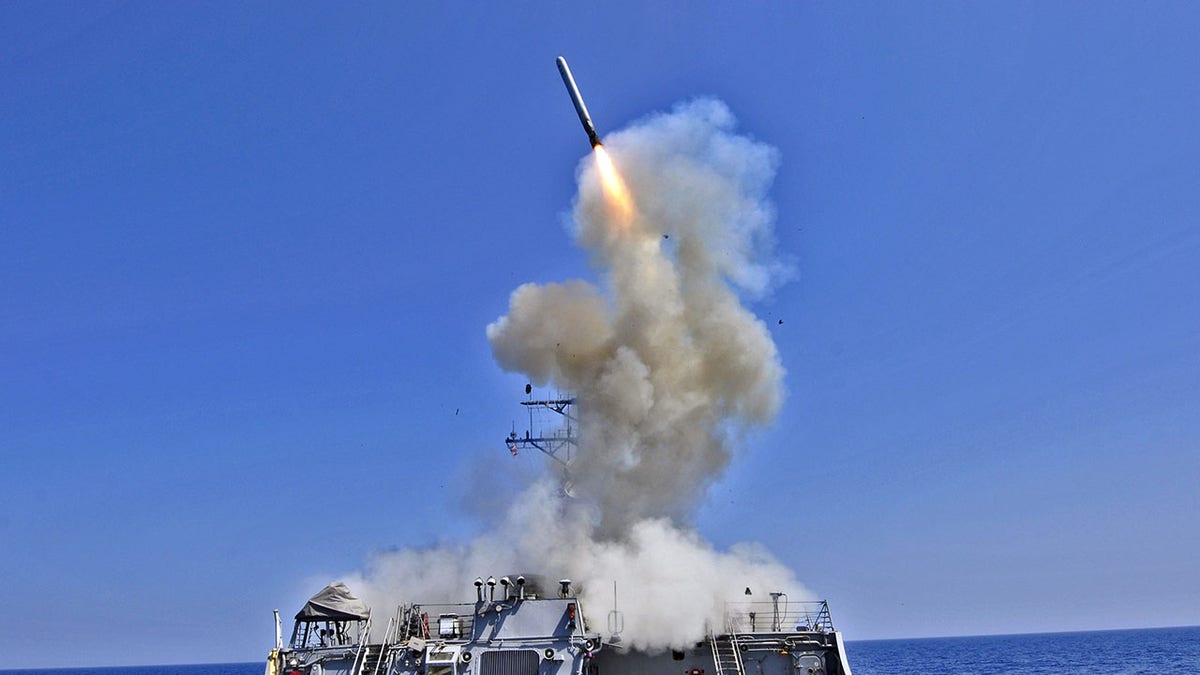
In this handout released by the U.S. Navy, the guided-missile destroyer USS Barry (DDG 52) launches a Tomahawk cruise missile in support of Operation Odyssey Dawn. (U.S. Navy via Getty Images)
Don’t worry about depleting TLAM inventory
The U.S. still has about 4,000 Tomahawks in its inventory, and new missiles like the U.S. Navy’s SM-6 are already in action. The U.S. Army deployed its new Dark Eagle long-range hypersonic weapons to Australia in August and will have its first full battery by December. By the way, last year Japan bought 400 Tomahawks for targeting China and North Korea.
Combat Record
Tomahawks have piled up an incredible combat record since Jan. 17, 1991, when 122 TLAMs hit Iraqi oil and command and control targets at the start of Operation Desert Storm. Eight-hundred TLAMs were fired in Operation Iraqi Freedom in 2003. Over the years, Tomahawks have hit targets in Iraq, Serbia, Afghanistan, Libya, Syria, Yemen and, of course, Iran. On June 22, TLAMs hit above-ground «key surface infrastructure targets» in the nuclear complex at Isfhahan, according to Chairman of the Joint Chiefs of Staff Gen. Dan Caine. The TLAM strikes left the sprawling site visibly damaged and blackened. «We gave it a capper with 30 TLAMS,» as Trump said Friday.
Putin may yell and scream about Tomahawks for Ukraine. Pay no attention. He’s grumbled about each weapon system, from F-16s to Patriots. And no, Putin does not dare escalate with nuclear weapons in Ukraine, because the wind patterns blow radiation clouds back into Russia.
As Trump said Friday: «Yeah, its escalation. But we’re going to talk about it anyway.»
ukraine,russia,military tech,defense,donald trump
INTERNACIONAL
León XIV canonizó a los dos primeros santos venezolanos y al «sacerdote satánico» que se convirtió al catolicismo

Ante 60 mil fieles que llenaban la plaza de San Pedro al Vaticano, el Papa León XIV canonizó a los dos primeros santos de Venezuela y a otros cinco elevados a la santidad, en una jornada que miles de venezolanos presentes en la plaza vivieron con una ruidosa alegría y fervor religioso
Con el repicar de las campanadas como fondo el pontífice canonizó al médico de los pobres José Gregorio Hernández y a la monja Carmen Rendiles, en Venezuela el momento fue saludado con aplausos ovaciones y una gran emoción del pueblo movilizado desde la madrugada de hoy en las celebraciones.
Junto con el doctor José Gregorio Hernández y la monja Carmen Rendiles, el Papa elevó a la santidad al antiguo “sacerdote satánico” convertido a la fe católica, el italiano Bartolo Longo; al primer santo de Nueva Guinea, Peter To Rot; al obispo armenio Ignacio armenio Ignacio Choukrallah Maloyan, a dos monjas italianas: las hermanas Vicenza María Poloni y Maria Troncatti.
En una jornada soleada, se desplegaron enormes retratos se los siete canonizados en el frente de la basílica.
El prefecto del dicasterio para la Causa de los Santos, cardenal Marcello Semeraro, leyó en voz alta los perfiles de los elegidos en medio de los aplausos y ovaciones de la multitud, miles de los cuales comulgaron de manos de un ejército de sacerdotes.
El Papa leyó la fórmula de canonización. Pidió “que su intercesión nos asista en las pruebas y su ejemplo nos inspire en la común vocación a la santidad”, dijo el pontífice durante la homilía.
La tradición impone que para ser canonizado sea necesario haber realizado dos milagros, llevar fallecido al menos cinco años y haber llevado una vida cristiana ejemplar.
Venerado en Venezuela desde hace años, José Gregorio Hernández Cisneros nació el 26 de octubre de 1964 en las montanos de la población andina de Isnotu, Estado de Trujillo. Tras viajar a Caracas para estudiar, se graduó de médico en 1888. Fundó la Academia Nacional de Medicina y combatió la mortífera epidemia de gripe española que mató al uno por ciento de la población del país.
Fallecido en 1919 su imagen está tatuada en la cultura popular venezolana, donde los más devotos lo veneran e imitan su siempre impecable vestimenta como un acto de fe.
“El doctor” es un referente para “la gente de a pie, de la gente humilde”.
Carmen Elena Rendiles, la primera santa venezolana, fue una monja nacida en 1903 sin el brazo izquierdo, que superó su discapacidad para fundar la Congregación de las Siervas de Jesús, antes de su muerte en 1977.
Además de los de los siete santos de hoy, el Papa canonizó el mes pasado a los italianos Carlo AcuTis, un joven llamado “el influencer de Dios”, que murió en 2006, y a Pier Giorgio Frasssati, considerado un modelo de caridad cristiana que murió a los 24 años, en 1925.
Hay que recordar que promotor de la canonización del médico Hernández fue el papa argentino Francisco, que firmó su declaración de santidad basado en “la veneración generalizada del doctor santo”
El Papa León presentó en su homilía a los siete nuevos santos como modelos para los católicos “pues llevaron encendida la lámpara de la fe”.
En la ceremonia de hoy fue canonizado también el arzobispo Ignazio Choukrailah Maloyan, un católico armenio que fue asesinado por negarse a renunciar a su fé, en lo que el Vaticano ha calificado como el genocidio armenio de la era otomana.
En el marco de las celebraciones previas a la canonización de los primeros santos venezolanos, se celebró en Roma un acto académico en el que el sustituto para los Asuntos Generales de la Secretaría de Estado Vaticano, el venezolano Edgar Peña Parra, destacó que estas canonizaciones “son un ejemplo universal capaz de inspirar fraternidad, servicio y esperanza, superando toda barrera cultural y geográfica”.
Destacó que “la canonización de Joe Gregorio Hernández no solo es un momento de reconciliación y unidad para Venezuela sino también un don para toda la Iglesia».
A su vez el arzobispo de Carcas Raúl Biond, destacó que la canonización de los dos primeros santos venezonalos representan “una causa país” y “un momento para generar esperanza” en medio de la crisis que atraviesa Venezuela”.
INTERNACIONAL
Israel says Hamas violated ceasefire with ‘multiple attacks’ leading to IDF response
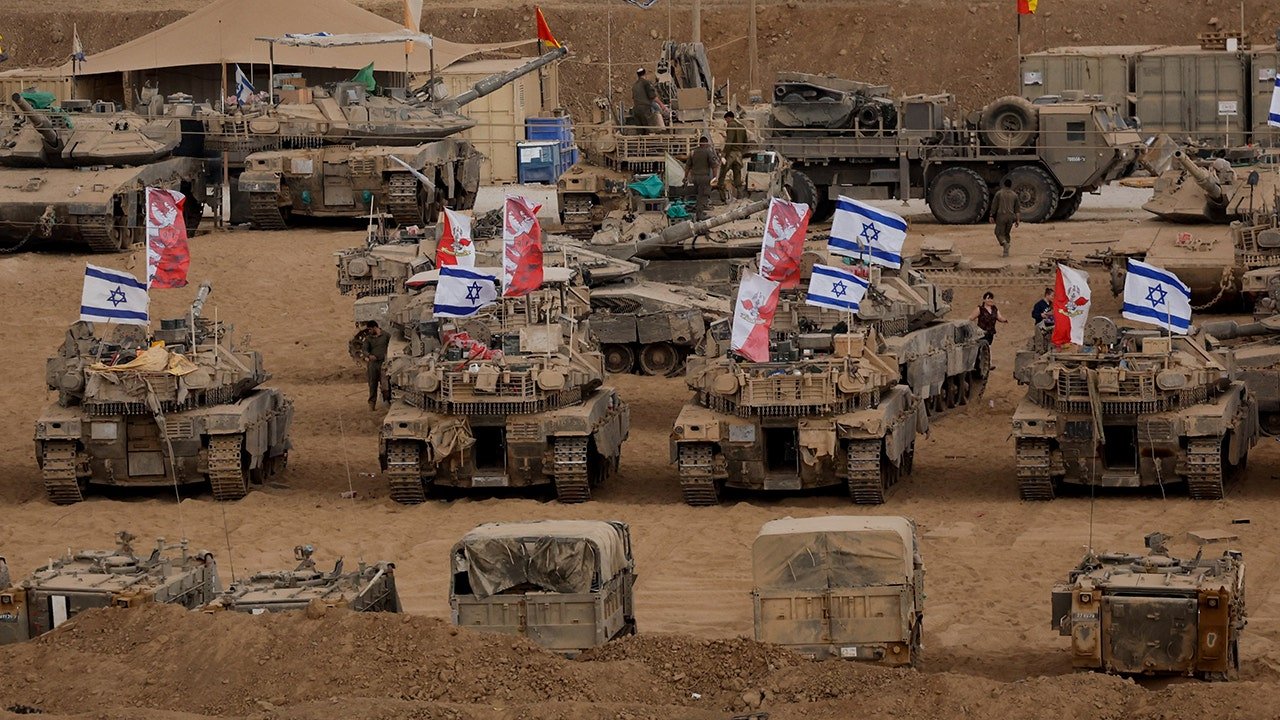
NEWYou can now listen to Fox News articles!
`The Israeli military conducted strikes against Hamas in Gaza after accusing the terrorist organization of repeatedly violating its ceasefire agreement on Sunday.
An Israeli military official confirmed the strikes to Fox News on Sunday, pointing to attacks by Hamas since Friday. The IDF later confirmed that it was taking actions in Gaza.
«Earlier today, terrorists fired an anti-tank missile and gunfire toward IDF troops operating to dismantle terrorist infrastructure in the Rafah area, in southern Gaza, in accordance with the ceasefire agreement,» the IDF said in a statement.
«In response, the IDF has begun striking in the area to eliminate the threat and dismantle tunnel shafts and military structures used for terrorist activity,» it continued.
HAMAS ACCEPTS TRUMP PEACE PLAN ENDING 2 YEARS OF WAR IN GAZA, RETURNING HOSTAGES
Military vehicles are gathered near the Israel-Gaza border, amid a ceasefire between Israel and Hamas, in southern Israel on Oct. 12, 2025. (Ammar Awad/Reuters)
Israel has responded by striking areas in the north and south of the Gaza Strip.
Israeli Prime Minister Benjamin Netanyahu’s office says he has instructed the minister of defense and other security heads to «act forcefully» in reaction to the attacks.
Hamas claims it has «no knowledge» of any attacks against Israeli forces, releasing a statement on Sunday saying they were still abiding by the terms of the agreement.
«We affirm our full commitment to implementing everything that has been agreed upon, foremost among which is the ceasefire in all areas of the Gaza Strip. We have no knowledge of any events or clashes taking place in the Rafah area,» the group wrote.
«We have no connection to any events occurring in those areas, nor can we communicate with any of our fighters there if any of them remain alive,» it added.
The reported attacks on Israeli troops comes after Hamas spent days fighting Palestinian rival groups after the ceasefire went into effect.
ISRAELI TROOPS ‘OPEN FIRE’ ON SUSPECTS WHO APPROACHED SOLDIERS IN NORTHERN GAZA
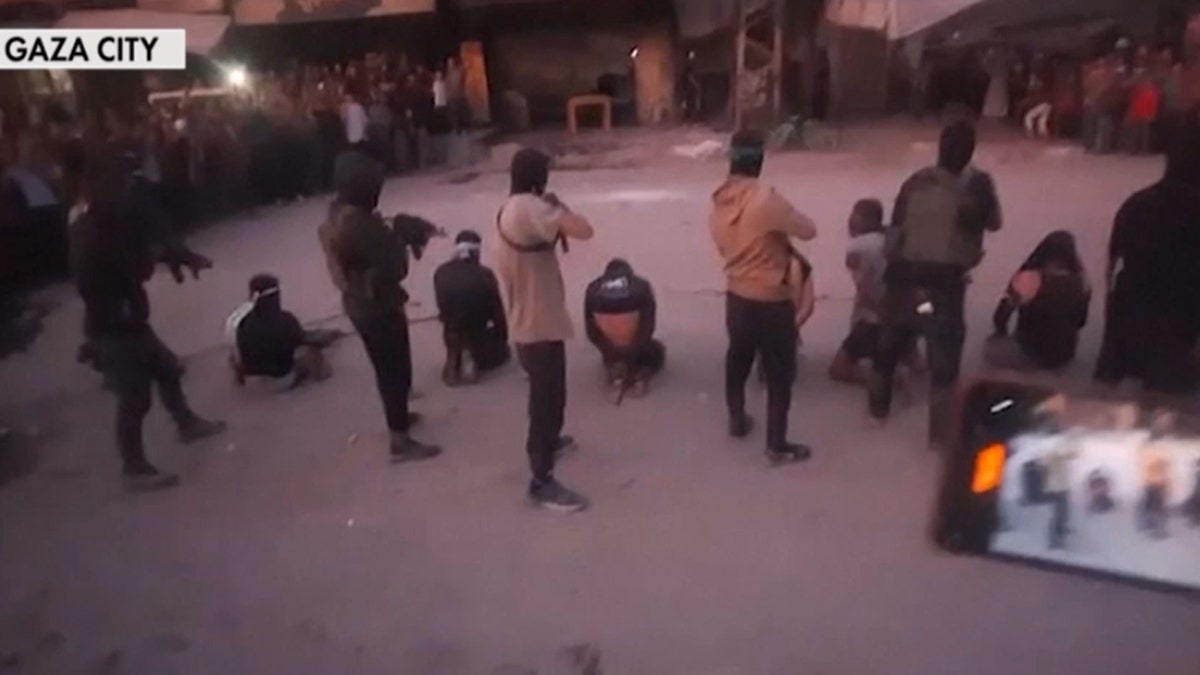
In this still from a verified social media video confirmed to Reuters by a Hamas source, seven men are forced to their knees and shot from behind by Hamas gunmen during public executions in Gaza on Oct. 14, 2025. (Reuters)
According to Reuters, Hamas executed at least 33 people in recent days in what officials described as a campaign to «show strength» after the ceasefire. Israeli sources say most of those killed belonged to families accused of collaborating with Israel or supporting rival militias.
The U.S. Department of State on Saturday warned on Saturday that Hamas may break the peace agreement with a «planned attack» on Palestinian civilians.
«This planned attack against Palestinian civilians would constitute a direct and grave violation of the ceasefire agreement and undermine the significant progress achieved through mediation efforts,» the department said in a statement on social media. «The guarantors demand Hamas uphold its obligations under the ceasefire terms.»
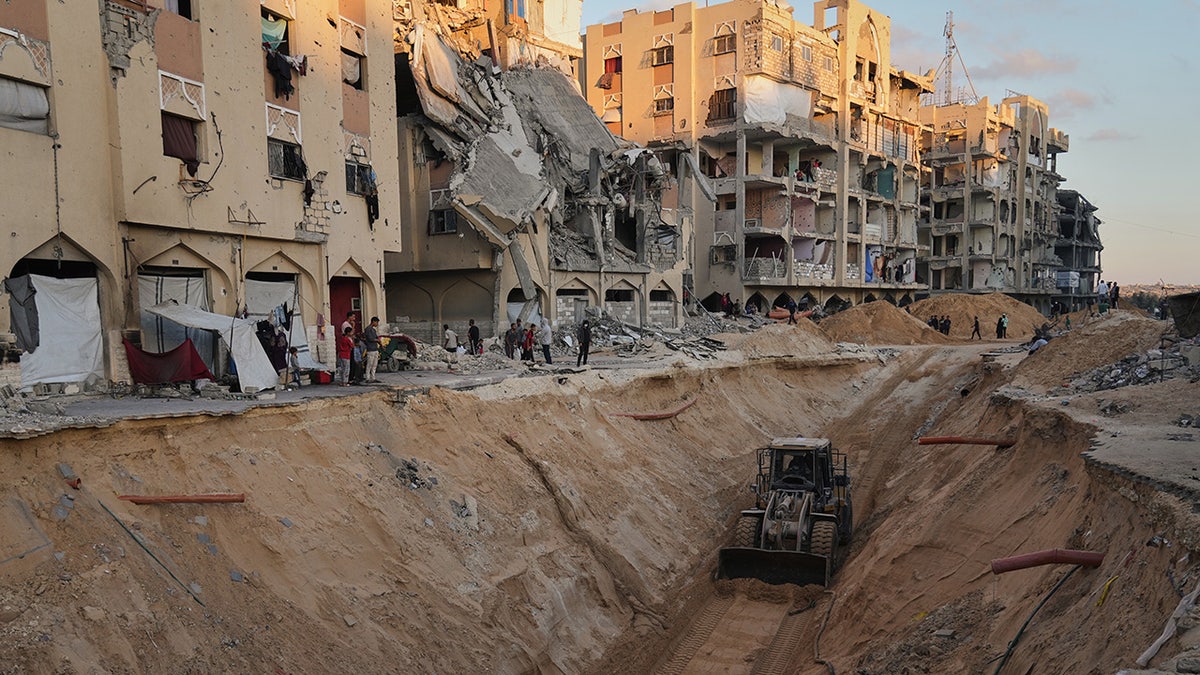
Members of the Hamas militant group searching for bodies of the hostages in Khan Younis, southern Gaza Strip, Saturday, Oct. 18, 2025. (AP Photo/Jehad Alshrafi)
«The United States and the other guarantors remain resolute in our commitment to ensuring the safety of civilians, maintaining calm on the ground and advancing peace and prosperity for the people of Gaza and the region as a whole,» the statement continued.
President Donald Trump warned Hamas on Friday that continued attacks on Palestinians would force the U.S. and Israel to intervene.
CLICK HERE TO GET THE FOX NEWS APP
«If Hamas continues to kill people in Gaza, which was not the deal, we will have no choice but to go in and kill them,» he wrote on X.
Fox News’ Brie Stimson contributed to this report
israel,world,middle east

 CHIMENTOS3 días ago
CHIMENTOS3 días agoLaura Ubfal mostró una escandalosa foto de Mauro Icardi con la hija de Benjamín Vicuña

 CHIMENTOS3 días ago
CHIMENTOS3 días agoSe confirmó de qué murió la famosa actriz Diane Keaton a los 79 años: «Murió a causa de una neumonía»

 POLITICA3 días ago
POLITICA3 días agoSantiago Caputo le respondió a Macri, que había pedido diálogo post electoral


























